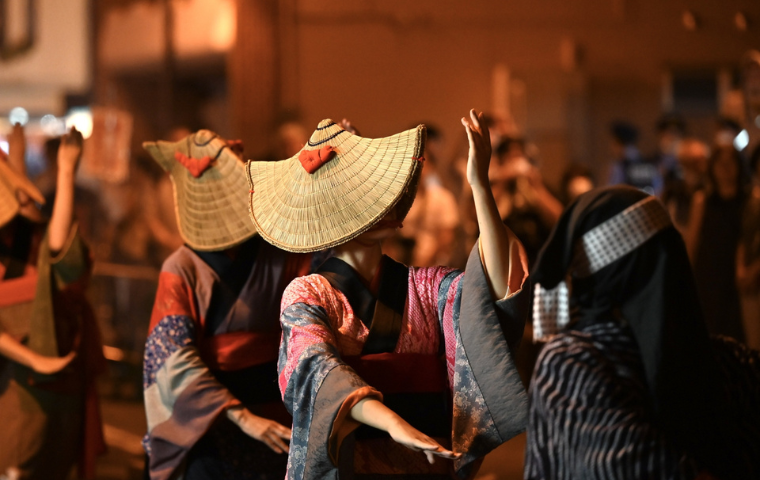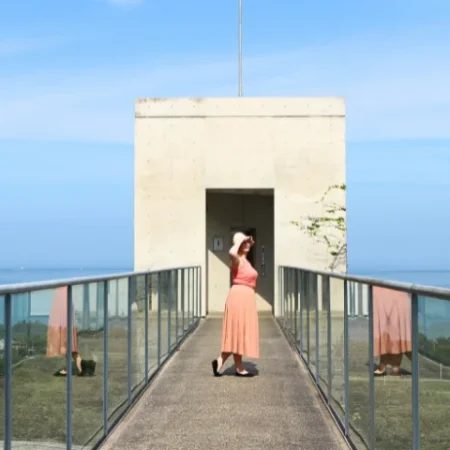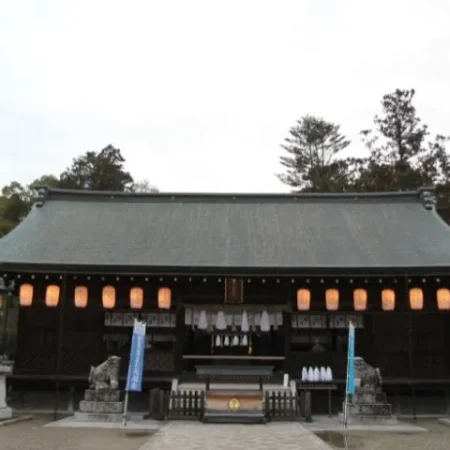Are you familiar with the ancient tradition of Obon? Maybe you’ve seen Youtube videos of people dancing in Yukata to the beat of Taiko drums? What are they doing? What is the significance of this event? Let’s find out!
Table of Contents
Origin of Obon in Japan
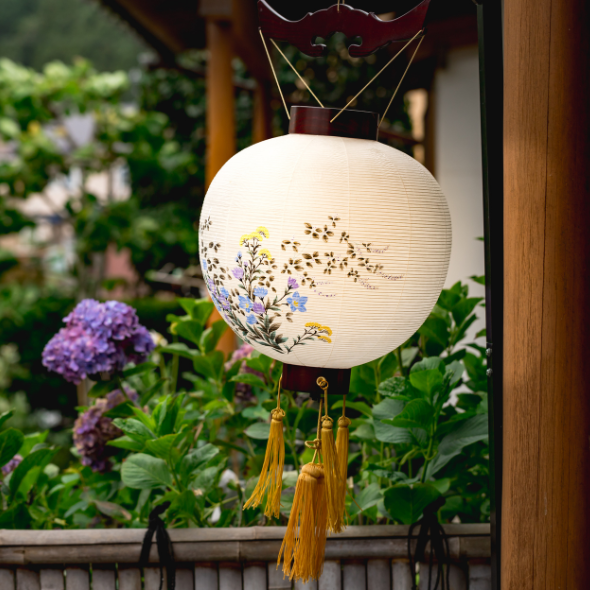
Pronounced “O- BONE,” the Obon event typically takes place over 3 days, from August 13th to 16th, although dates vary by region. The series of customs, rituals, and communal activities reflect the deep respect Japanese people have for their ancestors in an intricate blend of Buddhist and Shinto beliefs.
The origins of Obon can be traced back over 500 years, drawing from both Buddhist teachings and traditional Japanese customs. The festival’s name, “Obon”, comes from the Sanskrit word “Ullambana”, which means “hanging upside down” and refers to the suffering of spirits in the afterlife.
The tradition is said to have originated from the story of Mokuren, a disciple of Buddha. According to Buddhist legend, Mokuren used his supernatural powers to look upon his deceased mother and found her suffering in the Realm of Hungry Ghosts. Distressed, he sought Buddha’s counsel, who instructed him to make offerings to the Buddhist monks returning from their summer retreat.
Following Buddha’s advice, Mokuren offered food and prayers, liberating his mother’s spirit and bringing her peace. Overjoyed, he danced with gratitude, a gesture that evolved into the Bon Odori dance, a central element of the Obon festival.
Obon Customs and Obon Rituals
Preparations Until Obon

Before Obon begins, families clean and tidy their homes, especially the altars and graves of their ancestors. It is believed that the spirits of deceased family members return to the earthly realm during Obon, and preparations are made to welcome them properly.
On the evening of the first day, known as Mukae-bon, families light small fires called mukaebi at the entrances of their homes to guide the spirits back. Lanterns are also lit and often hung in front of houses or carried to the family gravesite.
Obon Food and Obon Prayers

Throughout Obon, families place offerings of food, fruits, and incense on household altars and at gravesites. These offerings are meant to nourish and appease the spirits during their visit. Additionally, memorial services and prayers are conducted at temples and homes to honor the deceased.
Bon Odori (Bon Dance)
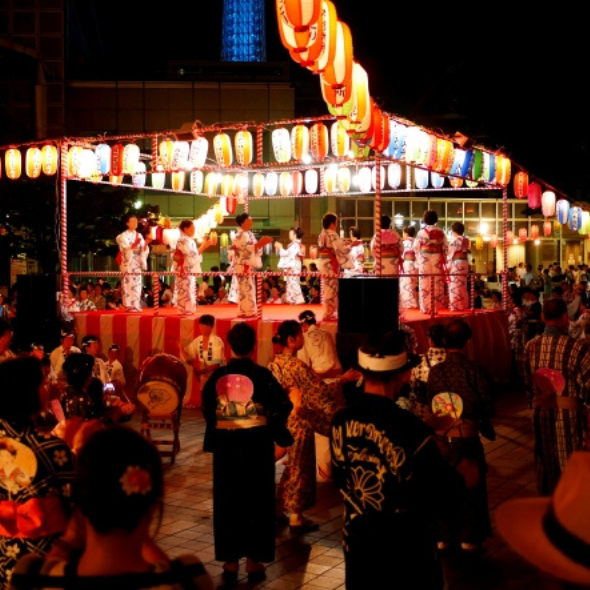
Bon Odori, a traditional dance performed during Obon, is both celebratory and reverential. Originating from Mokuren’s dance of joy, Bon Odori varies by region but generally involves participants wearing yukata (summer kimono) and dancing to the rhythm of taiko drums and other traditional instruments.
The dances are often held in community squares, temple grounds, or parks, and symbolize the gathering of people and spirits in a harmonious celebration of life and remembrance.
Send the Spirits with Okuribi on Okuri-bon
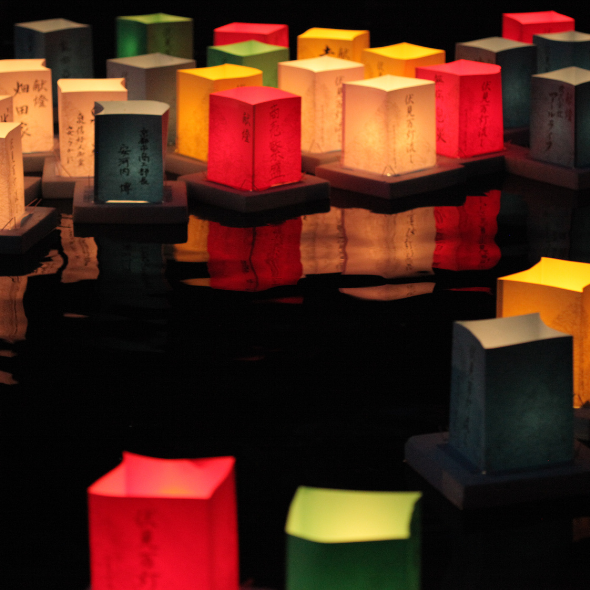
On the evening of the last day, known as Okuri-bon, families light okuribi fires to send the spirits back to the afterlife. In some regions, large bonfires are lit, most famously the Gozan no Okuribi in Kyoto, where giant characters are set ablaze in the mountains surrounding the city. The conclusion of Obon is marked by the floating of lanterns (tōrō nagashi) down rivers or into the sea, symbolizing the return of the spirits to the spiritual realm.
Recent Obon Tourism
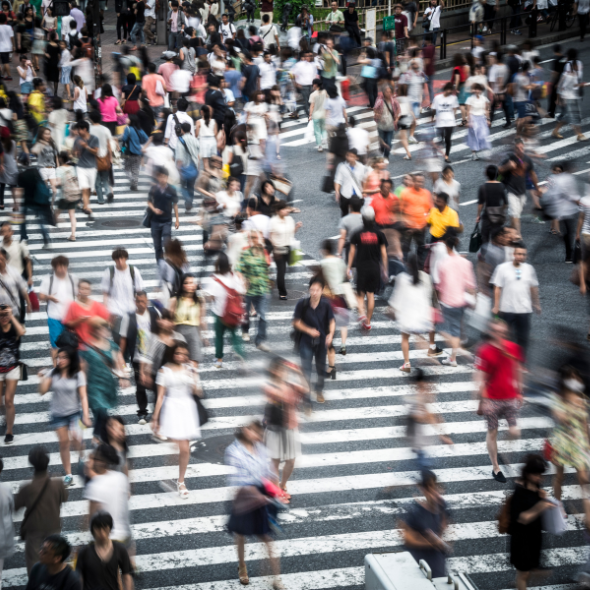
Obon is one of Japan’s busiest travel seasons, as many people return to their hometowns to pay respects to their ancestors. This mass movement leads to a surge in traffic, with trains, buses, and flights often fully booked. Popular tourist destinations and accommodations may also become crowded, making it challenging for travelers.
To avoid the crowds, some travelers may opt for less popular destinations during Obon. Regions like Tohoku, and smaller islands such as Awaji Island can offer a more relaxed and peaceful experience. These areas often feature beautiful natural scenery, historical sites, and cultural attractions that are less frequented by the majority of travelers.
Spend Obon Summer Vacation Comfortably on Awaji Island
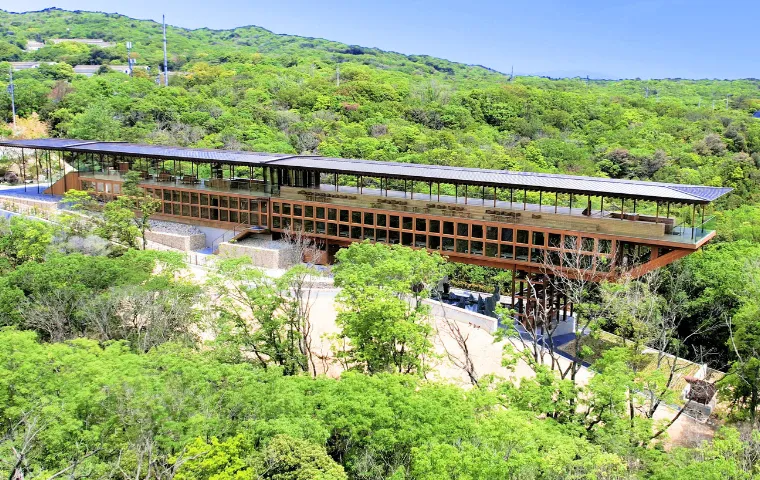
During the busy Obon season, it’s ideal to choose destinations that offer a peaceful retreat away from the crowds. Awaji Island is an excellent choice, providing both natural beauty and historical experiences that create lasting memories.
Awaji Island has numerous natural attractions, making it an ideal destination for outdoor enthusiasts. Its mild climate and lush greenery provide a refreshing escape from the summer heat.
Nature, Relaxation, Wellness, Culture, etc.
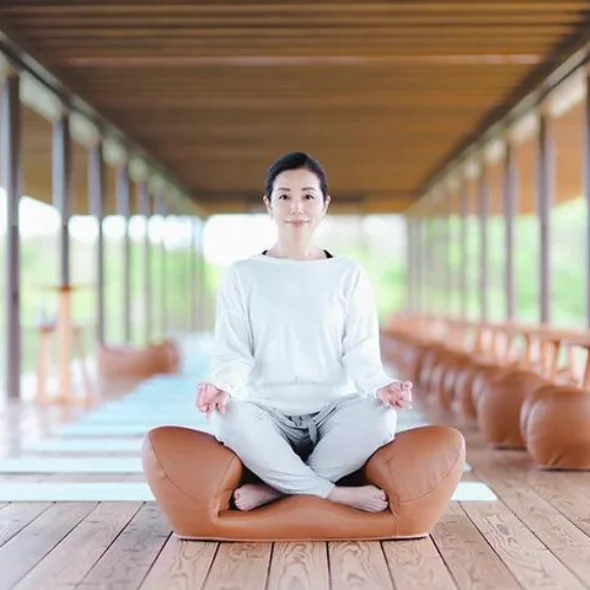
Visitors can explore Awaji Hanasajiki, a sprawling flower park where seasonal blooms create a breathtaking floral carpet, perfect for strolls and photography. For a more adventurous experience, the island offers excellent trekking and hiking, allowing travelers to immerse themselves in nature and uncover the island’s rich history.
For those seeking relaxation and wellness, Awaji Island has much to offer. The Zen Meditation Experience at Zenbo Seinei provides a tranquil retreat amid the island’s greenery, offering an ideal setting for meditation and mindfulness.
| Name | Zenbo Seinei |
|---|---|
| Address | 2594-5 Aza-Banaka, Kusumoto, Awaji City, Hyogo Pref. 656-2301 |
| Tel | 0799-70-9087 |
| Website | https://www.zenbo-seinei.com/en/ |
| Program Reservations | https://zenbo-seinei.urkt.in/direct/offices/587/courses |
| Hotel Reservation | https://www.booking.com/hotel/jp/shan-fang-jing-zhu-dan-lu-shi2.html |
| Operation Hours | Mon: 9:00 am~5:00 pm / Tues~Sun: 11:00 am~6:30 pm Closed: Varies depending on a month. Please inquire. |
Click here for details of ZEN Wellness SEINEI

Additionally, staying at GRAND CHARIOT, a glamping resort on the island, lets visitors enjoy comfortable, authentic accommodations surrounded by nature, with scenic views and starry skies at night.
| Name | GRAND CHARIOT |
|---|---|
| Adress | 2425-2 Kusumoto, Awaji City, Hyogo Pref. 656-2301 Located at Nijigen no Mori in Hyogo Prefecture Awajishima Park |
| Tel | 0799-64-7090 |
| Website | https://awaji-grandchariot.com/ |
| Reservations | https://www.booking.com/hotel/jp/guransiyariobei-dou-qi-xing-135deg.ja.html |
Click here for details of GRAND CHARIOT
Awaji Island’s Cultural Experiences

Awaji Island’s history and culture offer various hands-on experiences for a deeper connection to Japanese traditions. One of the highlights are natural indigo dyeing workshops, where visitors can learn the traditional art of dyeing fabrics using natural indigo.
Additionally, the island is known for its incense production, and visitors can try hands-on incense-making experiences to create personalized aromatic souvenirs.
Summary
Awaji Island offers a range of destinations to suit both active and relaxed travelers during the busy Obon season. During peak travel periods like Obon, quieter spots like Awaji Island may offer a better travel experience.



